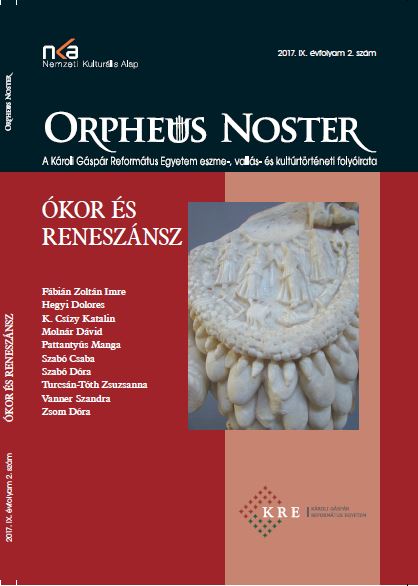Kiket melengetett Artemis Ephesia a „keblei” felett?
The possible interpretations of winged women ornaments on the chest of Artemis Ephesia statues
Author(s): Zsuzsanna Turcsán-TóthSubject(s): History, Ancient World, Theology and Religion, History of Religion
Published by: Károli Gáspár Református Egyetem
Keywords: Artemis Ephesia; Horae; Cancer; Porphyry; De antro nympharum
Summary/Abstract: In the analysis of ancient goddesses, the study of the statues of Artemis Ephesia proves most exciting. A great number of monographs, articles, and books have been published on this topic, but many unsolved problems remain. One of the most frequently occurring ornaments on the Artemis Ephesia statues is the women with wings on the chest. No agreement has been reached on who these figures could be: they were interpreted as representations of Victoria/Nike, the Horae, or even as reborn souls. Former research on these elements analysed them separately from the astrological signs which also appear on the chest of the statues; we should, however, consider them as parts of one common scene. The most frequent variant is when two winged women figures hold a wreath above a Cancer. With the help Porphyry’s De antro nympharum we can identify the Cancer as a gate, more exactly as the Gate of Souls, and the female figures as the guardians of these gates. Although the ‘Gate of the Soul’ is the most frequent variant of the scene, there are some other versions, too: two women with wings with more than one astrological sign (or without them), astrological signs without women, four women with wings with four or more astrological signs (or without them). Despite the variation of the scene, in most of the cases the woman figures can be classified as Horae on the basis of their numbers and attributes.
Journal: Orpheus Noster. A KRE Eszme-, Kultúr-, és Vallástörténeti Folyóirata
- Issue Year: IX/2017
- Issue No: 2
- Page Range: 121-150
- Page Count: 30
- Language: Hungarian

